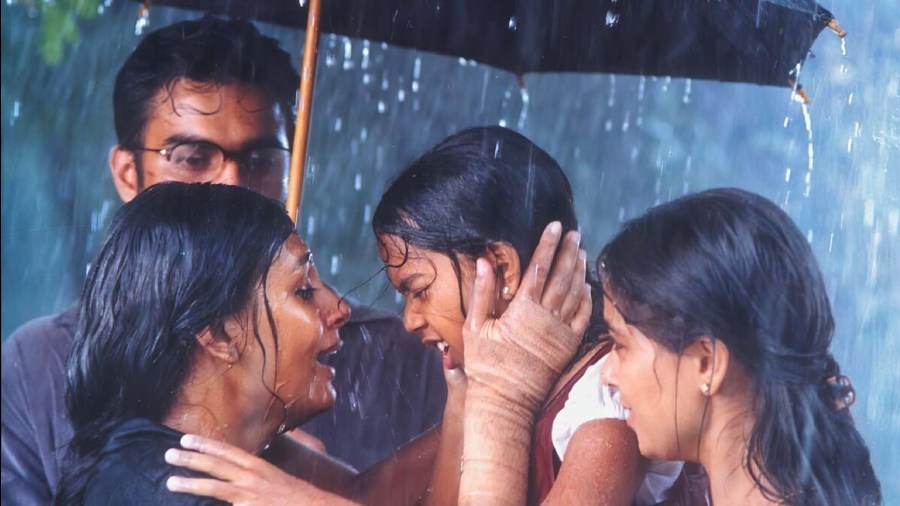Kannathil Muthamittal (A Kiss on the Cheek), which released in 2002, is one of Mani Ratnam’s most well-received films. It garnered critical success, eventually winning six National Awards. Still, after clocking two decades of release, Kannathil Muthamittal does not enjoy the same attention that Ratnam’s other works do, most prominently Roja and Bombay. Yet, that does not, in any instance, undermine the importance of a feature which has aged assuredly with time.
Similar to Ratnam’s other works that feature stories of love set against the geo-political background, Kannathil Muthamittal is told through the eyes of Amudha, the irrepressible nine-year-old daughter of an urban Tamil family in Chennai (formerly known as Madras). She is yet to know that she had been adopted by Thiruchelvan (R Madhavan) and Indira (Simran). Amudha’s birth mother Shyama (Nandita Das) is part of a Sri Lankan LTTE (Liberation Tigers of Tamil Eelam) cell.
Ratnam establishes the background of Shyama in the beginning, where she weds Deelipan (JD Chakravarty) in Mankulam, north-east Sri Lanka. Deelipan fights against the government in association with the LTTE. Soon he flees, leaving Shyama pregnant and with no other option than to move to India. She gives birth to her daughter in the refugee camp, and leaves for Sri Lanka in search of her husband.
This sets the background for Ratnam to focus on the present day, when Amudha’s foster parents finally reveal to her that she is adopted on her birthday. It is interesting to note the contrasting relationship Amudha has with her foster parents. She is closer to her foster-father, and it is Thiruchelvan who spurs the revelation. This is followed by Amudha’s repeated efforts to run away from home in search of her mother.
Ratnam builds the harshness of this revelation with tonal control, never letting the drama go overboard.
Even as the narrative segment jumps from Sri Lanka to India and back to Sri Lanka, the focus remains on this little girl whose constant interrogation about her biological mother is subtext to the disenfranchisment of a larger generation. Thiruchelvan and Indira give in to Amudha’s quest for finding her biological mother, and witness the unfolding chaos within the Sri Lankan territory. Ratnam stages this sequence with an eagle-eye view, where the local inhabitants run for their lives as the land turns from home to a battlefield in a few minutes.
What is so interesting in Kannathil Muthamittal is how Ratnam points to the construction of the Tamil identity which is an amalgamation of diverse regional contexts. Some identities are regional, and correspondingly internal. Whereas the other identities are constantly shifting in terms of political subjectivity, and hence external in their national landscape. An identity only comes under crisis when there is a strong reaction to the hierarchical structure of internal and external affairs.
The antagonist here is the systemic coercion of the state, that renders the regional identity as superficial in the eyes of the militant community. This comes to light when Amudha finally meets Shyama and pleads her to return. Upon meeting her, Amudha asks “Why did you leave me and go away?” She dismisses Amudha’s claim over her, proclaiming that the 300 trainees of her camp are her real children. There is no room for reconciliation, her life and her ideals are beyond the comforts of recompensation.
Amudha is positioned as a child to two mothers, tied to two nations. Kannathil Muthamittal invokes the possibility of a secular balance, as eutopic as it may still sound. At the end, the ‘umbrella’ that shields both the families, interrogates the torn conflicts between the nation and the state. In a generation built on reintegration, the cycle of trauma renews itself. Only in solidarity, there is hope.
Kannathil Muthamittal can be streamed on Netflix











